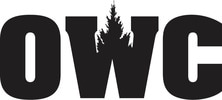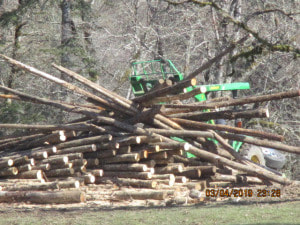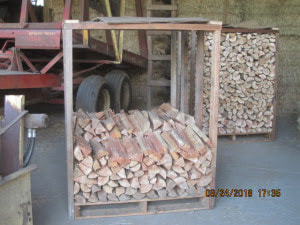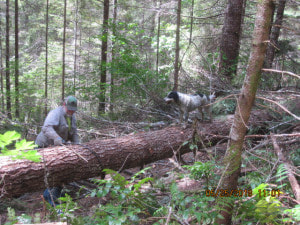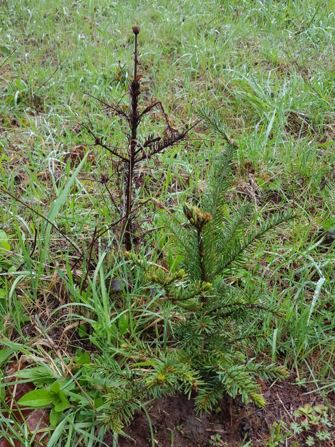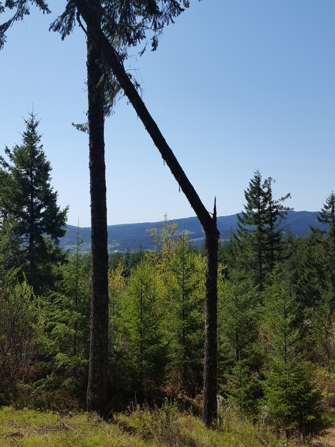|
By Susan Schmidlin
Our farm is tucked into the Coast Range of the Pacific Northwest. Most of the flat ground on the property is in hay fields, open range areas for the herd of Black Angus cattle, the Nehalem River and riparian areas. Most of the forestland on the property is uphill from the fields, steep uphill. The top of the ridge is over 800 feet higher than the elevation at river level. One of the biggest challenges we have in the firewood production project is ability to have wood available to process when we need it. With the small logging jobs we have during the summer months, we generate truckloads of pulp (small trees and tops not large enough to go to timber mills). Besides the pulp wood, we have so much more that is too small or short to fit onto a log truck so it cannot be shipped to the pulp mill. Although we are not necessarily opposed to burning piles of slash (the pieces that are too small for pulp, branches and debris), we do not like to burn in our forest for the simple fact that we cannot get into the forest easily in the winter time when burning should be taking place. The logging road up to the forest is inaccessible because of the steepness and it is not rocked so the only access by vehicle is during the dry summer months. Entry to the forest during the wet season and winter months from our property can be made on foot only. We choose to use our energy in making the uphill climb for recreation like hunting, mushroom harvesting and tree planting rather than on building and tending fires. With our supply being ‘up there’, the wood needs to be brought down the hill to landings in the late summer. Our logging dozer is equipped with six cable chokers. Each choker can encircle up to five trees at a time. A single trip down the hill can yield thirty trees. With some of the small diameter trees stretching out 40 feet or more, the pile in the landing can fill up quickly. 2018 was our first year of stockpiling the wood in the landing at the bottom of the hill to be processed into firewood for the OWC, our home use, friends and family. We estimated the volume to be the equivalent of three log truckloads of wood equaling out to about 30 cord of processed firewood. Confident that we had the supply of wood needed for our firewood bundling project, the next step was to determine how to season and store the wood as it is made into 16 inch pieces. Oregon regulations require six months minimum for wood to be seasoned with less than 18% moisture. Wood that was already seasoned and below 18% (dead standing trees or trees that had been in the landing since the year before), were cut, split and stacked directly into the farm truck with a dump bed. This truck is not used in the winter time and would sit idle in the barn so we used that space for wood that was ready to bundle. The truck bed holds 5 cord of firewood and as we use off the back the dump bed since it can be lifted and the wood pieces drop to the back in easy reach to bundle. For the wood that needed to season, Mike used pallets to form cribs to hold the split pieces as they cured and dried. The lumber for the cribs was salvaged from tearing down the old house 10 years ago that stood on the property. With the salvaged wood, nails and screws, Mike made eight cribs. Each crib holds a half-cord of firewood with the 16 inch pieces fitting into three rows with a bit of space available for air circulation during the drying process. Once the firewood pieces are stacked into the crib for drying and seasoning, they need to be placed in a safe place. Our herd of cattle are used to wide open areas in which to graze during the summer months after the hay has been harvested, this includes the areas around the barns and landings. If we filled a crib with firewood and left it in the sunshine to season, the cattle would claim the crib as a scratching post. It would not last long before the structure and wood pieces would be nothing more than a heap on the ground. To ensure the firewood pieces stay clean, we move the filled cribs into the storage area of the barn away from the cattle as soon as we fill them. The wood cures naturally and the cows are not able to disturb the crib or the wood. We use the front loader tractor with pallet forks to move the cribs inside for the drying process. With the wood available, the sawing in full swing and curing taking place, we needed to learn how to process the seasoned firewood into those neat bundles that you see in the grocery store. It didn’t take many questions before the Oregon Woodland Coop members started offering that we tour their properties and see first-hand how they process their wood. Stay tuned for the next installment in the Series, So You Think You Can Wood. See more photos here: https://schmidlinangusfarms.com/think-you-can-wood-2/#more-8616 By Susan Schmidlin
Our forest is 80 acres of predominantly Douglas Fir with some White Fir, Cedar, hemlock and spruce is mixed in, large leaf maple, and wild cherry with thickets of wild hazelnuts and vine maple. A logging operation by Sunset Logging in the 1920's had cut much of the large wood and hauled off the property by a temporary railroad placed on the far west end of the place. Shortly after the logging, a fire nearly cleared the hillside and decimated most of the remaining trees, these were trees that had been too small for the logging operation. The stand of timber that is currently on the hill has been from natural regeneration from the few trees that survived the fire. The property owners used the woods for poles to build the barns for the cattle they ran on the lower/flatter ground along the river. They harvested wood for fuel to heat the houses on the property. They used open-range grazing on the property, and for many miles around, so the cattle managed natural brush control and to lessen fire danger. We purchased the farm in the 1970's. The overview of our tree management strategy has remained constant over the years. Clear out dead, dying, damaged trees from the woods. Clean up debris by creating piles of limbs and rotting wood for small creature habitat. Remove salvageable timber each year. Create access with skid roads throughout the acreage. Replant areas that need to be filled in. Mike has been in charge of the forest part of our property and has done all the work in the woods. We knew that eventually we needed to do what is referred to as a pre-commercial thinning, one that takes out selected trees in a section to free up the space needed for the remaining trees to flourish to their potential. The damaging storm forced us to get help with the monumental task that compounded the need for thinning with the need to clean up the amount of unproductive dead and dying trees. Replanting more than we harvest has always been a yearly task and some of the trees that were damaged during the storm were some of the first trees that we planted. With knowing the history of the forest and working in it, we assessed how much wood we would have after the 2018 summer season of logging was finished. By the time we had moved all the wood down out of the woods and into piles in the flat ground of the landing, we figured we had about three log truck loads of timber that could be made into firewood. That measures out to about 30 cord of wood. Looking forward, we were anticipating several more years of thinning that would lead to the same volume levels of logs that would make good firewood. In the past we had sold firewood by 5 cord lots in the old farm truck. That truck is no longer road worthy so that idea was out. The pickup could carry a cord at a time but we would need to build racks in order to do so, and we would have to advertise, take and deliver orders. By deciding to sell our firewood in bundles through the OWC, the Co-Op is in charge of the orders to local grocery stores and we deliver on a set schedule. We decided to go with bundles. 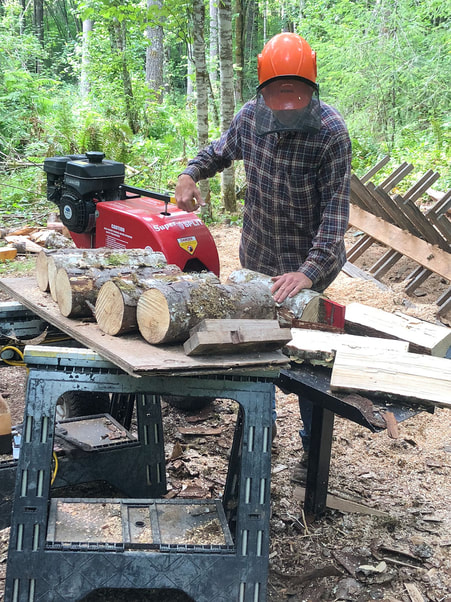 By Karen Karger In 1992, while looking for a small acreage on which to live and raise a horse or two, Sandy and Lyal Purinton stumbled across 41 acres of severely over-cut forest with a run-down farm house. Reminding Sandy of her childhood home, the purchase of the property was inevitable. The first few years were spent reforesting the property and making the house livable. The farm has grown over the years and now encompasses 120 acres. With the help of their sons, Justin and Collin, the farm has been managed with a desire to create a sustainable forest that will provide wildlife habitat and a legacy for their grandchildren. Lyal has belonged to OWC for over ten years and has always appreciated having access to consultants and other knowledgeable individuals who provide forest management skills to help new members. The OWC is now a distributor for practical forest tools from LogRite® and SuperSplitter® and offers a substantial discount for members. Lyal runs a custom sawmill business and sells firewood through the OWC. "Now that the kids are grown, it's often a one-man operation," says Lyal, "so finding tools and equipment that can make the process more efficient is really important." For example, a log arch enables Lyal to haul larger logs- up to 4 feet in diameter- with a tractor. "With the log arch I can pick up the front end of a log and pull it straight through the woods. It takes less power, the log is more stable, and it doesn't drag the log through the dirt, which would dull my saw. When I have clean logs, I can cut all day- otherwise I have to sharpen every couple of hours." LogRite also has smaller arches that can be pulled by an ATV or by hand. Lyal also uses a LogRite peavey and hookaroon to speed his operations. 'The peavey has a longer handle and is made of lighter but stronger aluminum so I can throw bigger logs around on the sawmill. Something about the angle on the hook makes it bite better than any other peavey I've used -just one whack and it's solid. With the hookaroon, I can reach out and grab a board on the sawmill and pull it toward me. I can pull rounds of firewood to the splitter, too. It saves me miles by not having to walk around my equipment all the time." Lyal uses a gas-powered SuperSplit kinetic splitter to process logs for the firewood business and his family's personal use. "The SuperSplit works at least three to four times faster than a hydraulic splitter," remarks Lyal. "The wide work table holds the split wood and the pusher clears it into the bin, which means I don't have to manually pick it all up and move it. That saves me a lot of time." Lyal says the SuperSplit is remarkably frugal on gas, too. "I can split two and a half to three cords of wood on a tank full of gas," he adds, "and that's only three quarters of a gallon." An electric version of the SuperSplit is also available. "I like that all of this equipment is made in the U.S., too," says Lyal in conclusion. (Originally published in Forest Forum, newsletter of Washington Co. Small Woodlands Assoc.) 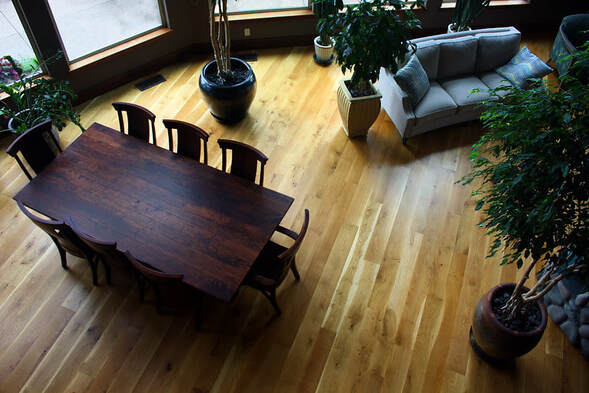 Oregon White Oak wide rustic flooring by Zena Forest Products shows fewer seams. Oregon White Oak wide rustic flooring by Zena Forest Products shows fewer seams. Zena Forest Products is announcing the availability of a new engineered hardwood floor product that is sourced from our own Oregon forests, providing a beautiful, local alternative to imported hardwoods. Zena Forest Products’ new, wide rustic engineered hardwood flooring offers Oregon builders, architects, designers and homeowners a new, locally-sourced option that is appropriate for installation over a wide range of applications including radiant heat and concrete. Zena’s locally grown and manufactured flooring is available in Oregon White Oak, Western Bigleaf Maple and Oregon Ash, and is designed to last for generations due to its high quality construction and thick hardwood wear layer. Through rigorous research and development, Zena Forest Products’ new flooring design blends durable construction with local materials from ecologically sound sources and is aesthetically “show-stopping.” Both fashionable and functional, Zena’s engineered hardwood floors also provide a more sustainable flooring option because they use nearly three times less lumber than solid hardwood flooring, allowing Zena to stretch the precious resource of our local trees. “Our model is unique,” said Ben Deumling, owner of Zena Forest Products. “We’re the only company in Oregon that has integrated all aspects of the timber process, using sustainable forest management and harvesting practices to create a beautiful, local, one-of-a-kind alternative to imported hardwoods for local building projects.” Solid wood floors do not provide enough dimensional stability in wider planks to ensure the floor will stay tight over time. Too much seasonal movement can cause gaps in the seams, roughness and squeaky floors. One of the primary benefits of Zena’s site-finished, engineered flooring is the seams between the boards disappear, leaving a monolithic and mostly impermeable surface. Zena’s engineered floors have a 3/16” hardwood wear layer that is laminated to an 11-layer plywood core on the back. The plywood provides the necessary stability in the floor, and the extra thick wear layer means the floor can still be sanded and finished just as many times as a traditional solid floor. In addition, the tongue and groove profile on the ends of the boards, also called an endmatch, gives the floor even more stability. Availability This locally-sourced, rustic wide-plank hardwood flooring is available directly through Zena Forest Products at 503-687-2626. Zena’s engineered flooring comes in 4.25, 5.25 and 6.25 inch widths, and lengths ranging from 12 inches to eight feet long. 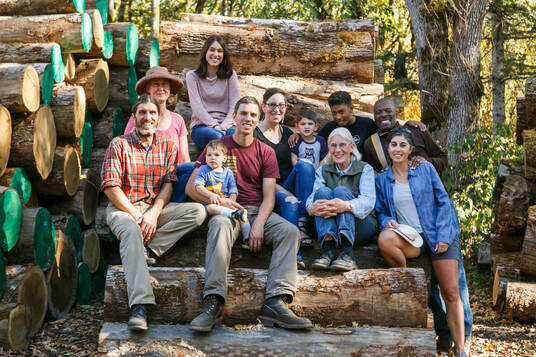 Zena Forest Products is a family-owned business located in the Eola Hills of Oregon's Willamette Valley and is home to both the largest White Oak stand in Oregon and the largest contiguous block forest within the Willamette Valley. Home to threatened and endangered animal species, the 1,300-acre forest includes areas of endangered Oak Savannah and Oak Woodland ecosystems as well as headwaters of the Rickreall, Yamhill and Spring Valley watersheds. The Zena Forest, protected by a conservation easement that stipulates the forest will remain a working forest in perpetuity, has been managed by the Deumling family since 1987. No development is allowed. In addition, strict harvest levels, habitat preservation and enhancement are mandated by the easement, yet they have a successful hardwood flooring, lumber and millwork business. The Deumling family is leading their industry by example in the management and preservation of the forest's ecological and historical values. Zena is finding ways to make their valuable resources go further, sustain a living forest that will thrive now and into the future, and help other land owners learn how to keep their forests intact through sustainable management practices. Zena Forest Products exemplifies how value-based, rural entrepreneurship can fuel business growth while preserving the quality and character of the forest it depends on. The Deumlings’ focus is on creating a robust and sustainable forest ecosystem supported by the craft production of local Oregon hardwood flooring, lumber and millwork. Zena produces both solid and engineered hardwood flooring in Oregon White Oak, Western Bigleaf Maple and Oregon Ash. The company also produces custom hardwood stair parts, heat registers, countertops, paneling, lumber and more. For a full list of products and more about Zena Forest Products, visit www.zenaforest.com or call 503-687-2626. 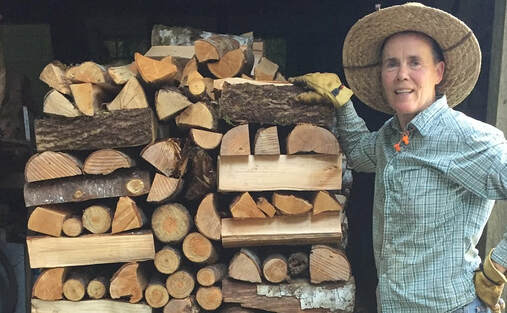 Eve Lonnquist with a pallet of bundled firewood Eve Lonnquist with a pallet of bundled firewood The following story was recently posted on the Northwest Natural Resource Group blog. For the full text of the blog including a story on tapping big leaf maple trees, click here. Lynn Baker and her partner Eve Lonnquist are members of the Oregon Woodland Co-Op, a group of over 70 private family forestland owners in Oregon. They’ve been selling bundled firewood through the Co-op since 2012. Lynn and Eve, along with Eve’s brothers, steward Cedar Row Farm—a 160-acre forest nestled in the Nehalem River foothills. The forest was purchased by Eve’s grandmother in 1919. Now, the family is returning their stretch of the Nehalem floodplain back to shade-providing conifers as part of a Natural Resources Conservation Service project. The firewood comes from Cedar Row Farm’s thinning projects and fallen trees from snow and wind storms. It’s turned into three types of firewood bundles: “Regular,” which is a mix of fir, alder, and hardwoods; “Kindling,” which is smaller pieces of cedar and fir; and “Premium,” which is a mix of hardwoods including oak, maple, and cherry. Lynn handles all of the firewood orders. Right now, about 20 grocery and hardware stores are stocking their bundles. Their vendors include New Seasons, Green Zebra, Gaston Market, and some Ace Hardware stores. 8.5% of the wholesale price of the firewood goes to the co-op for management and marketing, and the rest is passed on to the farmer. The regular bundle retails for about $7. “Our customers really like our firewood,” Lynn says. “If you look at our bundles next to other bundles, it’s really beautiful, high-quality product.” The quality of the wood isn’t the only attractant: the label on the bundle explains that Cedar Row Farm is certified through NNRG’s FSC© group certificate, which sets it apart from most firewood sold at grocery stores as being from a responsibly-managed forest. The label also includes the story of the farm, so buyers know exactly where the wood comes from, how it’s harvested, and who manages the forest. These humble chords of wood represent a win-win-win situation: wood buyers feel good about the responsibly sourced and hyper-local wood warming their homes and camp fires, Eve & Lynn take home around $7000 a year in profit, and their stewardship of the forest balances the multiple goals of recreation, income from timber harvest, and wildlife habitat in their forest. A full list of stores carrying Eve and Lynn’s firewood is available here. Eve & Lynn also sell chiminea firewood, available through Little Baja. Other products sold through Oregon Woodland Co-op include evergreen boughs, Canopy Essential Oils (created by another NNRG member, Jim Merzenich of Oak Basin Tree Farm, and Co-op members Neil Schroeder and Richard Hanschu at Oregon Forest Canopy) and Oregon Heartwood. OWC Annual Meeting Saturday, April 13, 2019 Rain Cloud Tree Farm 44848 SE Warriner Road, Corbett, OR 9:00 AM - 2:00 PM, potluck at noon 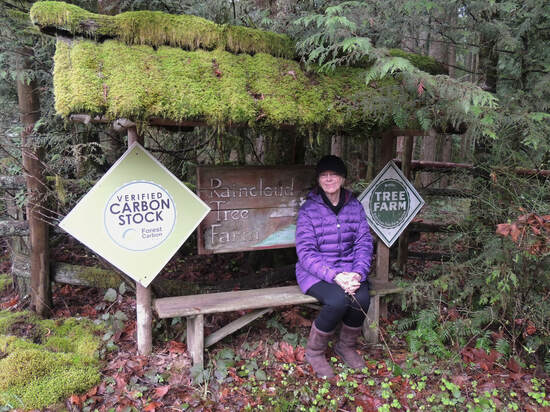 The Stewart family will host the 2019 OWC Annual Meeting at their Raincloud Tree Farm south of Sandy, Oregon on Saturday, April 13. All OWC members and others interested in joining OWC are welcome to attend. Program Highlights
Raincloud Tree Farm Raincloud tree farm has been in the Stewart family for over a century. It was first homesteaded in 1889. It has been managed by Jon Stewart since 1973 utilizing a series of three carefully developed management plans. Over the past 63 years, the family has harvested over 2.6 million board feet from the 120 acre parcel. They currently have over 3.3 million board feet of timber growing on the tree farm. It consists of a variety of species including Douglas fir, western red cedar, western hemlock, broadleaf maple and red alder that range from four to 104 years in age. Relatively level, the tree farm is located on the Aims plateau above the Bull Run Watershed. It receives approximately 120 inches (or ten feet) of rainfall a year and is drained by two year round fish bearing streams. There are two family homes and a small log cabin on the property. They and the tree farm's timber stands are accessed by an all-weather road. Most importantly, Raincloud is the first small woodland property in the nation to be certified for carbon sequestration payments under California's new cap and trade legislation. Its owners are currently developing a new management plan in cooperation with the Pinchot Institute and Ecotrust to integrate carbon storage into its long term management objectives. Potluck Lunch We will enjoy a potluck lunch at Noon. Please bring a generous side dish, salad or dessert to share. OWC will provide pulled pork sandwiches for the main course. Directions The property can be reached either via I-84 or Hwy. 26. The distance from Highway 26 in Sandy is approximately 7 miles. From the I-84 exit, it’s about 15 miles. For folks coming from Washington County or downtown Portland, the route via I-84 is faster. See the Google map link here https://goo.gl/maps/KfA4ETEFnM42 From I-84 Take Exit 18 Delta Park immediately after crossing the Sandy River Turn S on Historic Columbia River Hwy. Turn R on SE Hurlburt Rd Turn R on SE Gordon Creek Rd. It becomes SE Bull Run Rd Turn L on SE Warriner Rd Look for the Tree Farm sign on right. Then continue a short way before turning left at the driveway immediately after the entrance to our tree farm. From Hwy 26 At the east end of Sandy, turn L on SE Ten Eyck Rd Cross the Sandy River Turn R at the fork with Marmot Rd Turn L to continue on Ten Eyck Rd Turn R on Bull Run Rd Keep L at next fork to continue on Bull Run Cross the Bull Run River At T intersection, turn R on Bull Run Rd Keep straight. It becomes SE Warriner Rd Look for the Tree Farm sign on right Then continue a short way before turning left at the driveway immediately after the entrance to our tree farm. We are hosting the event across the street on a neighbor’s property that has a barn and fields for parking. There will be folks directing arriving visitors. Please join us for what promises to be a most interesting and informative meeting. 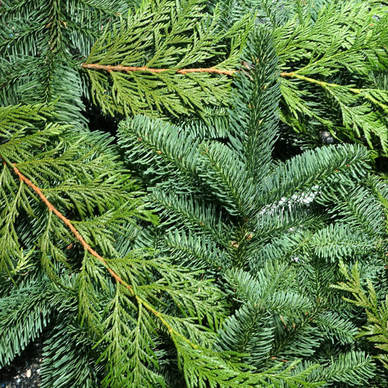 By Miles Merwin, Ridgeback Tree Farm The winter holiday season is busy not only for those Co-op members working hard to meet the demand for bundled firewood, but also for those of us who sell evergreen boughs. During November and December, we harvest boughs from our own forests and sell them wholesale to florists in the northern Willamette Valley. Our customers in Portland and Salem use our boughs to create table decorations, centerpieces and special arrangements for holiday decorations. Planning for the upcoming season starts in Sept. and Oct. as we gather orders, which are then divided among the Co-op members supplying boughs. This year we have seven Co-op families involved in our bough program, which began 10 years ago. To insure that we supply our customers with fresh, high quality evergreens, OWC follows a detailed protocol for harvesting and packing. We currently supply eight different species of native Oregon conifers, including Noble fir, Western red cedar, and Ponderosa pine. We don’t harvest boughs more than a week ahead of delivery and keep them cool to maintain freshness. Our members bring all their boughs to our barn as a central collection point. Then we assemble the species that each customer has ordered, load it all in the trailer, and hit the road to deliver. This process is repeated every week during our short but intense bough sales season. Through our sister company, Oregon Heartwood, we can also supply retail customers with fresh evergreen boughs for home decorations, wreath making, etc. We can ship boughs anywhere in the continental US. Learn more about retail bough sales.
 By Marc Ahrendt There are aspects that are understood by all within my family about our property. Some came to us early. For example, it takes a great deal of work to even just keep things maintained, let alone addressing any desired enhancements. Another would be the trade-offs between modern conveniences, like Internet access speeds, and the rural life, like the amazing quiet. Yet one aspect that took some time to fully understand/appreciate was that we do not live on our property alone. We found bats living in the attic of our home, mice in all the outbuildings, elk amongst all the seedlings, back bear in trail camera photos, and coyotes breaking the evening silence. Early on we saw this as “man vs. nature”, but it has become “man with nature”. Wanting to be good stewards of the property has forced us to respect the overall health of the land …not just our future timber. Instead of picking photos for this brief article from a good stash of trail camera photos, I simply walked out of the house and over to one of our older tree stands and quickly/easily took the above photos. Amazing to be able to so easily observe so much life in/on/above the ground. Our compromise with nature so far has been to do what it takes to keep nature outside of our structures and from hampering our future timber from acquiring high market value, while letting them figure out the rest amongst the areas we do not disturb. One such area is along the creek the runs through our property, and another area is an old stand of trees from which we will never remove any wood. Another bonus for them is that we do not litter, burn, or use chemicals. The family member that takes over our forest management plan in the future will hopefully continue or better implement a “man with nature” perspective. |
